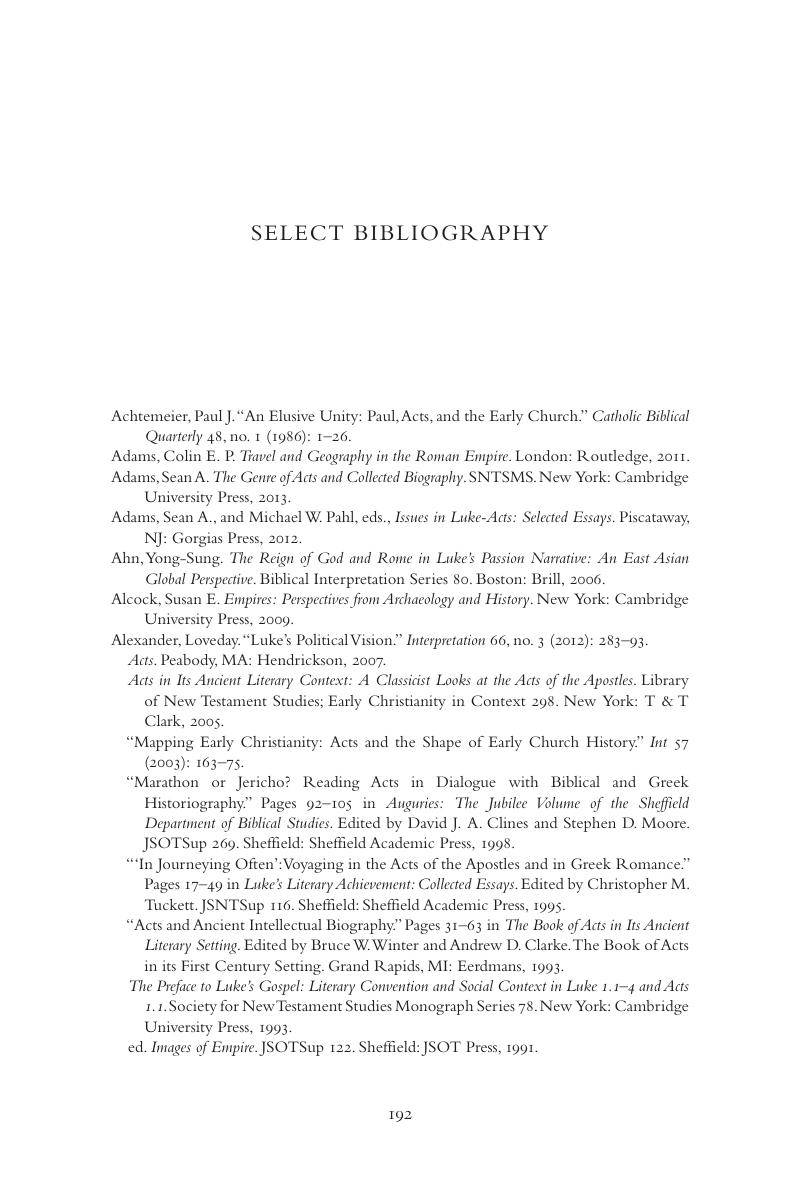Book contents
- Acts of the Apostles and the Rhetoric of Roman Imperialism
- Acts of the Apostles and the Rhetoric of Roman Imperialism
- Copyright page
- In Memoriam
- Contents
- Illustrations
- Acknowledgments
- Abbreviations
- Introduction: Acts and Empire
- 1 Acts and Monumental Historiography
- 2 Imperial Virtues and Provincial Representations
- 3 Paul and the Politics of a Public Portraiture
- 4 Acts and Anti-Jewish Propaganda
- 5 Women, Gender, and Roman Imperial Masculinity
- Conclusion
- Select Bibliography
- Index
- References
Select Bibliography
Published online by Cambridge University Press: 21 July 2017
- Acts of the Apostles and the Rhetoric of Roman Imperialism
- Acts of the Apostles and the Rhetoric of Roman Imperialism
- Copyright page
- In Memoriam
- Contents
- Illustrations
- Acknowledgments
- Abbreviations
- Introduction: Acts and Empire
- 1 Acts and Monumental Historiography
- 2 Imperial Virtues and Provincial Representations
- 3 Paul and the Politics of a Public Portraiture
- 4 Acts and Anti-Jewish Propaganda
- 5 Women, Gender, and Roman Imperial Masculinity
- Conclusion
- Select Bibliography
- Index
- References
Summary

- Type
- Chapter
- Information
- Acts of the Apostles and the Rhetoric of Roman Imperialism , pp. 192 - 225Publisher: Cambridge University PressPrint publication year: 2017



